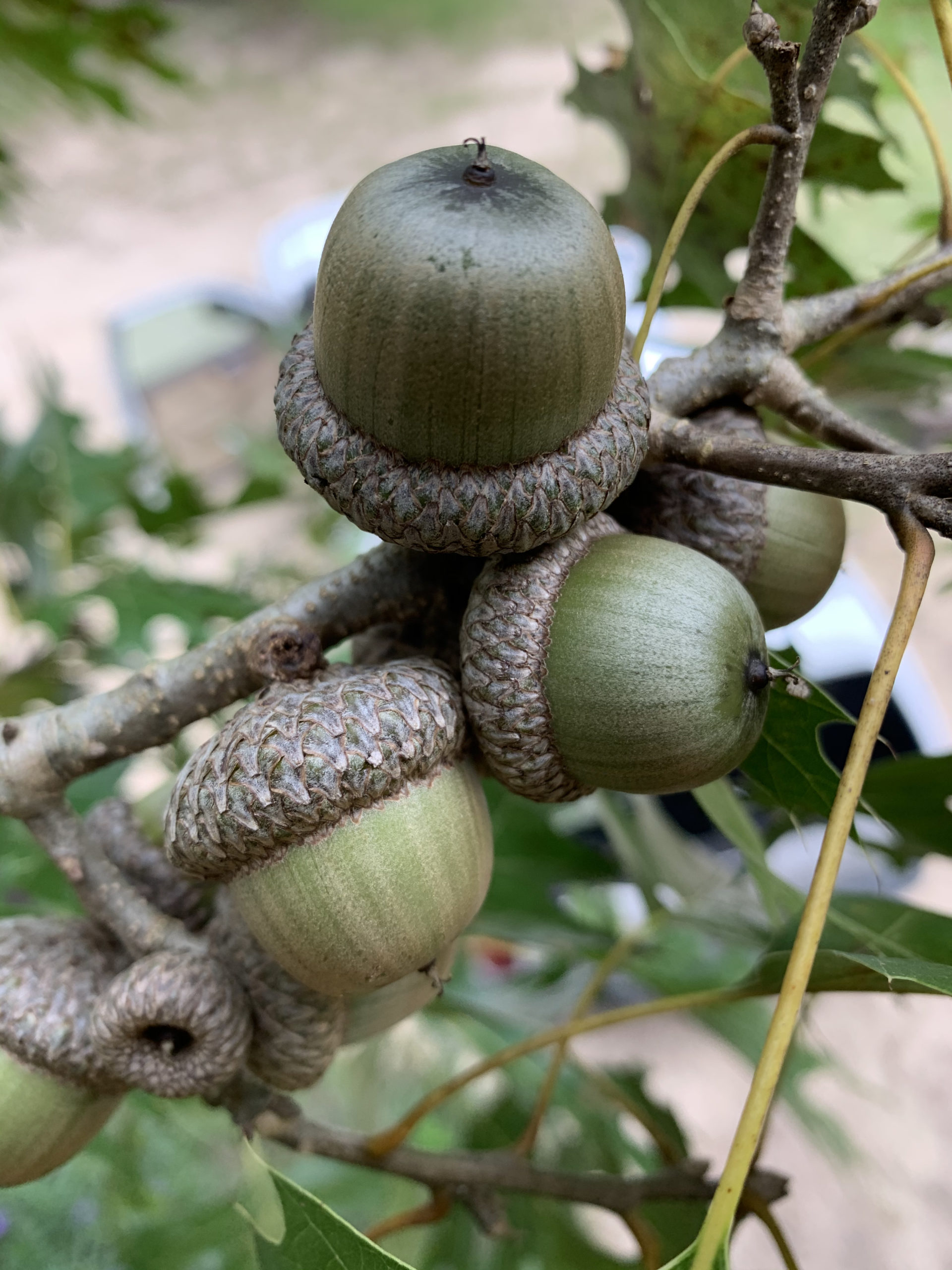Hard Mast Crops
When it comes to planting crops to attract wildlife, the first thing that usually comes to the mind of most hunters is food plots. That’s changing. More land stewards are thinking long-term and planting mast orchards with the growing realization about the importance of helping wildlife meet their year-round nutritional needs and enhancing the land for future generations. Though not the only type, the most common and popular are hard mast orchards. They may cost a little more upfront in time, effort and money, but once established will continue to provide indefinitely. Let’s look at a few options for those considering hard mast orchards.

Several studies on deer nutrition have shown that white-tailed deer prefer acorns above all commonly occurring hard mast varieties, though that wasn’t always the case. Acorns are high in the carbohydrates and deer need to lay on their winter fat stores, and the protein they need to maintain strength and body function. Not all oaks are created equal, and by planting a variety you can be far more effective and efficient at improving and increasing the year-round nutritional attractiveness of your land. Chestnut Hill Outdoors offers several different varieties with different qualities, growth characteristics and soil and sunlight requirements, offering more options as to where you can establish your orchards.


(left Shumard acorn and small Dunstan Chestnut) (right Shumard acorn and large Dunstan Chestnut)
For example, Shumard oaks are a native variety that typically grows best in moist, well-drained soils but can also tolerate drier limestone soils and higher pH than many other oaks. Because they are part of the red oak group, acorns take two years to mature, so trees produce abundant mast every 2-4 years. They’re also among the fastest-growing red oak varieties and are capable of gaining 1-2 feet of height per year, eventually reaching heights of 40-60 feet.


(Shumard Oak)
The Nuttall oak, another red variety, likes it wet. They’re much more tolerant of poorly drained soils, even areas that experience intermittent flooding during the dormant season. They can be an important food source for waterfowl in flooded timber or green tree reservoirs. They drop their acorns later in the fall than many other oak species, sometimes as late as December and even January, greatly widening the window of your mast orchard’s attractiveness.
As its name implies, swamp white oak is a member of the white oak group that grows best in poorly drained soils like those found in bottomlands, floodplains, or along river, stream and pond margins. Like the red oaks, they produce strong crops every 3-5 years, but because acorns mature in one year, they will produce some every year. The swamp chestnut oak is also a member of the white oak group that, despite its name, prefers to put down roots in slightly drier soils. It is also shade-intolerant, preferring open areas with more sunlight. That makes them a good option for the edge between drier arable ground for food plots and bottomland too wet to till and plant.


(Swamp White Oak)
Another white oak variety, the sawtooth is a real hero among those wishing to bridge the time gap between food plots and mast orchards. They mature very quickly, sometimes bearing acorns in 4-6 years and eventually producing prolific crops almost annually. Trees as young as 15 years of age have been reported to produce over 1,000 pounds of acorns in a single season and they are early producers, providing hard mast as early as September.

(Sawtooth Oak)
While oaks now rule the forest bandstand, there was a time when they played a distant second fiddle to a far more abundant and prolific hard mast producer. American chestnuts not only dominated the eastern hardwood forest, but they also littered its floors each fall with a nutritionally superior mast crop of large nuts that contain 4 times the carbohydrates, 2.5 times the protein and only a fraction of the fat of a white oak acorn. And because they lack tannins, chestnuts are also sweeter.
The original American chestnut is mostly gone from our landscape, wiped out by a blight. But thanks to plant breeders like Dr. Robert T. Dunstan, their legacy lives on and is making a great resurgence. Chestnut Hill Outdoors’ Dunstan variety grows rapidly, bearing nuts in 3-5 years. They’re specifically bred to be blight resistant and at maturity can stand 60 feet tall and produce up to 100 pounds of nutritious nuts per tree.

If you’re serious about enhancing your land for wildlife now and future generations of both humans and wildlife, you should give serious consideration to establishing hard mast orchards. And if you intend to do that, don’t just plant one species or variety. By planting several, you can cover a wider time span, from varieties like sawtooth oaks that drop as early as September to Nuttall’s dropping nuts in January. Adding red oak varieties improve the odds at least some trees will produce a bumper crop every year and Dunstan chestnuts help you hedge all bets by being more tolerant of varying spring conditions and better overall mast producers.


